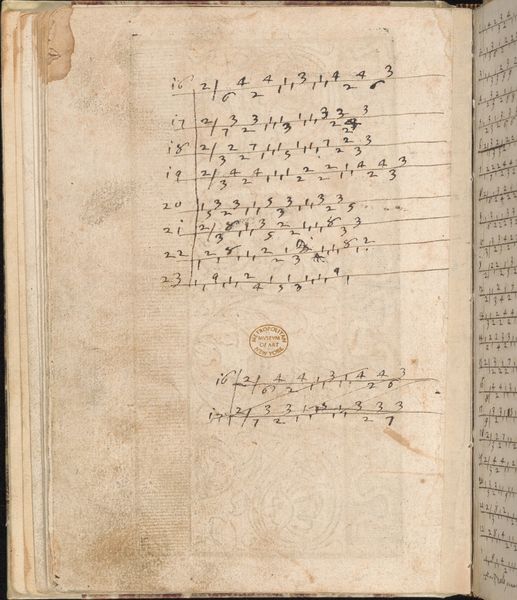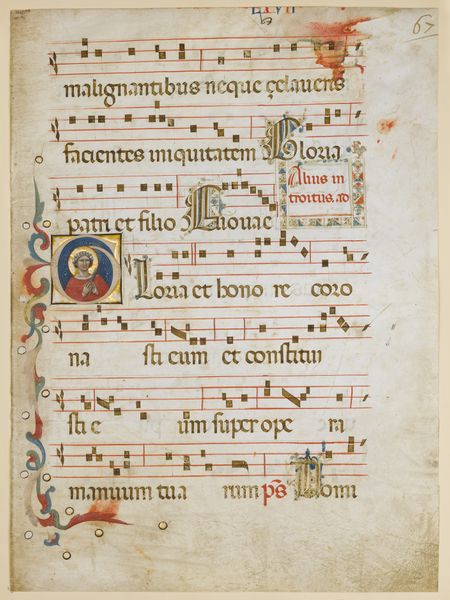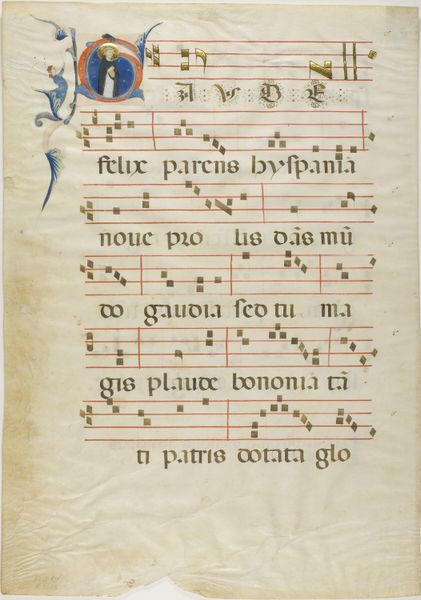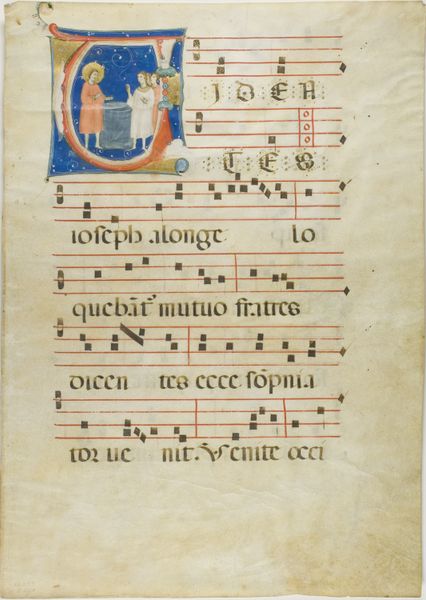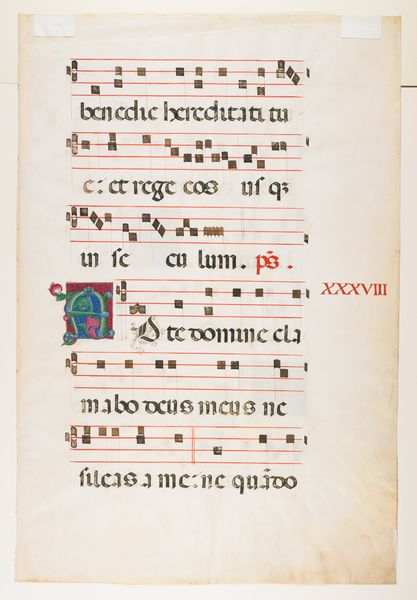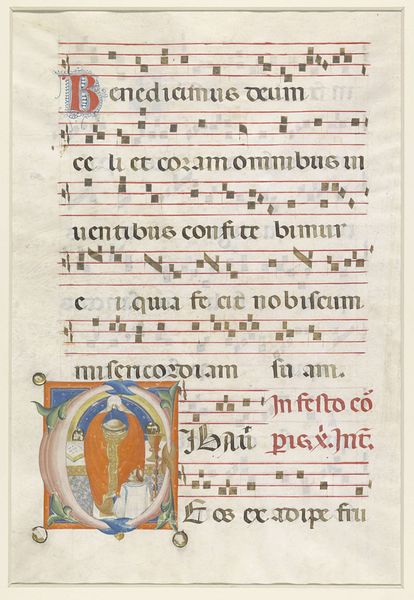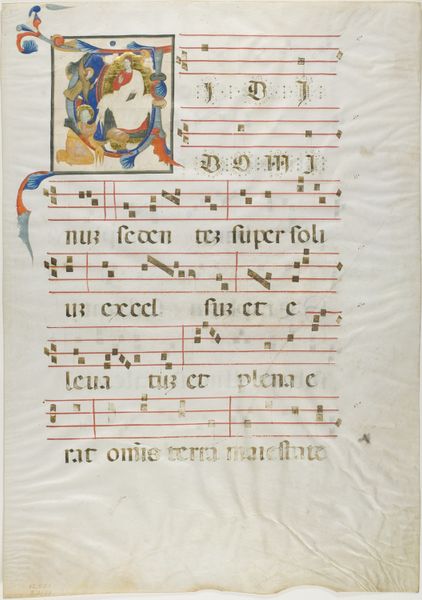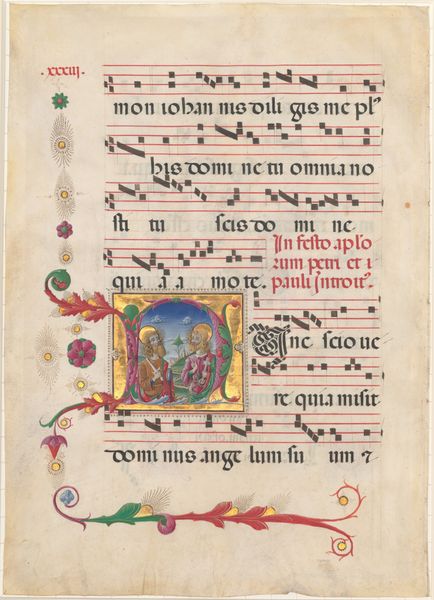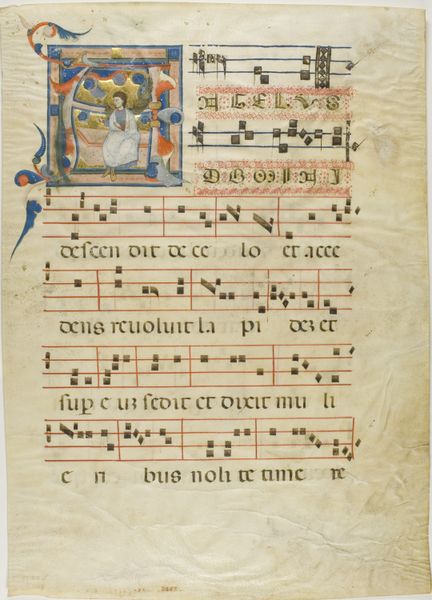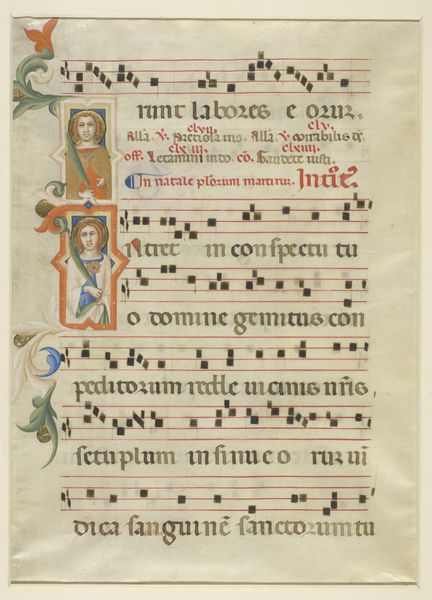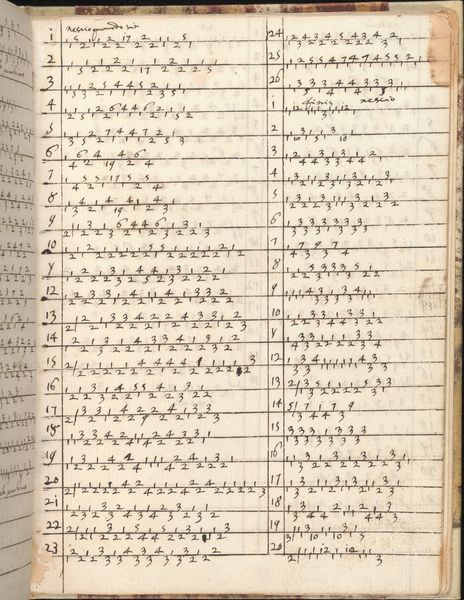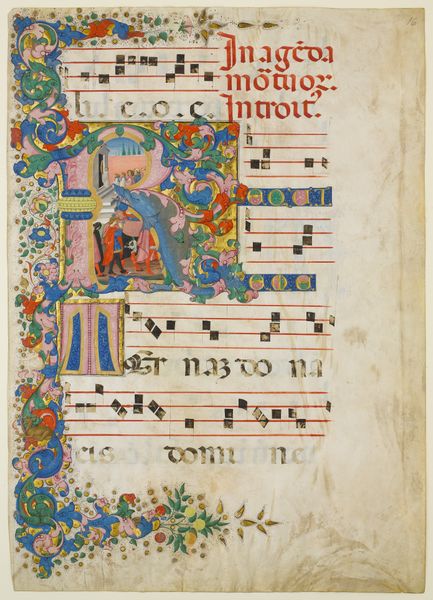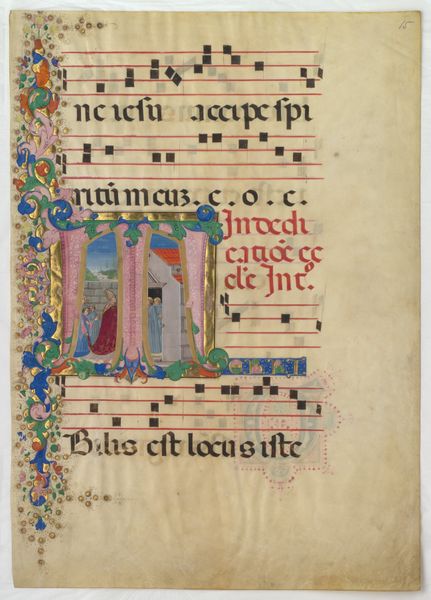
drawing, mixed-media, textile, paper, ink
#
drawing
#
aged paper
#
mixed-media
#
toned paper
#
medieval
#
water colours
#
worn
#
furniture
#
textile
#
paper
#
ink
#
geometric
#
line
#
mixed media
#
limited palette
#
calligraphy
Dimensions: height 304 mm, width 360 mm, thickness 17 mm, width 720 mm
Copyright: Rijks Museum: Open Domain
Curator: This is a page from a medieval manuscript. While attributed to Anonymous, "Album met ontwerpen voor schrijnwerk, kwabornamenten en zuilen", made between 1658 and 1699 offers insight into late medieval artistic practices. Its mixed media, incorporating drawing, ink, watercolors, and textiles, is striking. Editor: My immediate impression is of intense labor and skilled production; the red rulings meticulously defining space on the worn paper give this music, written to direct communal worship, a sense of both beauty and function. The tonal qualities almost shout a melancholic yet beautiful past. Curator: Absolutely, the limited color palette emphasizes the linear elements. We must understand the social dynamics; musical notation wasn't only for the composer. How did the material and its appearance signal power relations in a feudal hierarchy? Editor: Let’s think about that labor and craft embedded in parchment and ink. Someone prepared that paper, mixed the ink, copied and rendered that musical score by hand, thus materializing their world within this art. And even more people consumed it by singing, which adds another dimension of embodied craft. Curator: It really encapsulates the socio-cultural climate of that time, with calligraphy intertwining form and function; a testament to artistic skills, but also about controlling the narrative in specific public settings. Editor: You can see that each individual component is consciously handled as an index of devotion and even love, but that kind of value production doesn't appear magically. By engaging art on material terms, we realize it becomes much more complex. The worn look that is age must once have looked brand new. What possibilities that must have evoked for their users at the time. Curator: It reminds us of the profound role of art as a cultural mirror, both reflecting and shaping societal beliefs and structures. It opens up so many discussions on accessibility of musical creation during that time and the manuscript’s future circulation. Editor: Indeed. It is like opening a door and glancing backwards; each material choice adds a different narrative layer that helps us approach an otherwise distant experience.
Comments
No comments
Be the first to comment and join the conversation on the ultimate creative platform.
